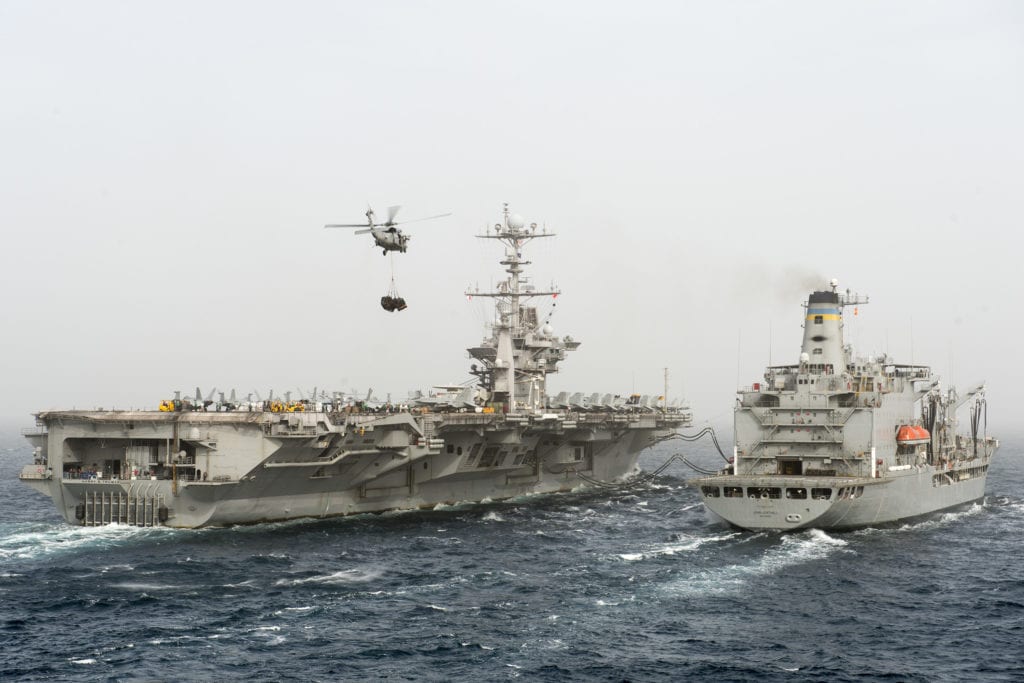
ARLINGTON, Va. — The Navy’s recent practice of sending nuclear-powered aircraft carriers (CVNs) on back-to-back deployments — termed “double-pumped” — is not an example of a surge capability, a member of Congress said.
“Surge is additional capability to respond in a time of crisis or for an unplanned operation,” said Elaine Luria, D- Virginia, vice chair of the House Armed Services Committee, speaking March 15 in a webinar sponsored by the Hudson Institute. “What we are doing now is we are double-deploying — I won’t even call it surging — double deploying these ships to fill a gap for other ships that should have been doing routine deployments at that time but are delayed in maintenance.”
Under the Navy’s Optimized Fleet Optimization Plan, a carrier is planned to make one scheduled deployment in a 36-month cycle and be available for a surge deployment later in the cycle.
At least three CVNs — USS Harry S. Truman, USS Dwight D. Eisenhower and USS Theodore Roosevelt — each have made double-pumped deployments in recent years, Luria said.
Luria attributed the double-pumped deployments to a shortage of maintenance capacity in the Navy’s shipyards, where most maintenance of nuclear-powered ships and submarines takes place.
She cited the current case of the USS George H.W. Bush, which has been in a maintenance availability for 27 months — more than 2.5 times the planned time — and still is not ready to sail.
“That lengthening of that availability came about because of the capacity at [Norfolk Naval Shipyard], and there were decisions made that there were other priorities that need to be clocked up,” she said.
The shortage of maintenance capacity has caused the Navy to contract out nuclear submarine maintenance availabilities to Newport News Shipbuilding, for example.
“When did we get to this point where we really couldn’t keep up with carrier maintenance?” she asked rhetorically. “When you look at the point at where we got to all nuclear carriers — when we got rid of [oil-fired carriers] Kitty Hawk, Kennedy and Independence — we had less [maintenance capacity and fewer yards for in-depth maintenance on nuclear carriers.] If we’re operating an all-nuclear fleet, we need to have the ability to maintain those carriers.”
Luria said the Navy’s Shipyard Integrated Optimization Plan, designed to upgrade the Navy’s shipyards over a 20-year period, which she said, “is way too long of a period for that and I think we should make that investment for those upgrades to our shipyards to be made more quickly.”
She also said that Norfolk Naval Shipyard also needs upgrades just to perform routine maintenance on the Navy’s newest class of aircraft carrier, USS Gerald R. Ford.
- Insitu Going Strong at 30, Focusing on Maritime Operations - April 8, 2024
- Navy Awards Boeing Additional Funds for MQ-25 Drones for Testing - April 3, 2024
- Benign 4th Fleet AOR Useful for Unmanned Vehicle Operationalization, Admiral Says - March 27, 2024






